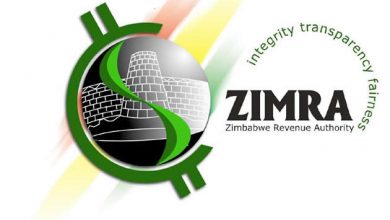‘Courts will not return to ineffective manual system’

Deputy Chief Justice Judge Elizabeth Gwaunza has said that even if the courts faced difficulties when they adopted the Integrated Electronic Case Management System (IECMS), they will not return to the manual system since the advantages of going online outweigh the challenges
According to Justice Gwaunza, the benefits of the IECMS far outweigh the ‘perceived and real challenges’ and the solution to any of the challenges is not to return to the manual system, as others “seem to think.”
“The new system has dealt decisively with inefficiency, corruption, constant missing records and pleadings, back-stamping of documents filed late by parties, clandestine setting down of matters, and many other evils pointed out by stakeholders,” she said during the official opening of the legal year 2024 in Bulawayo on Monday.
The deputy chief justice said the justice delivery system “cannot afford to go back to those dark spots” because the digital system has brought efficiency and transparency.
The first paperless court in Zimbabwe was officially commissioned on May 6, 2022 by President Emmerson Mnangagwa when he presided over the opening of the Commercial Division of the High Court, marking the introduction of e-courts in the Constitutional Court and the Supreme Court.
From that date, filing of court documents and processes became electronic and hearing of matters, in instances where the parties agreed to it, could also be done virtually.
The second phase of the IECMS programme was on February 1, 2023 when the Labour Court and the Administrative Court both went digital.
Justice Gwaunza said the implementation of the IECMS during that phase was seamless, as there were few or no challenges at all.
“Only the courts that remained operating on the manual system were the General Division of the High Court and the Magistrates Courts, which are coincidentally the largest in terms of volume of work and inevitably the busiest,” she said.
The third phase of IECMS was in the General Division of the High Court and the Office of the Sheriff on September 1, 2023 but Justice Gwaunza said that came with more challenges than experienced during phases one and two in the other courts.
“The challenges experienced in the General Division of the High Court were not legal in nature because the laws which saw the successful implementation of the digitisation programme in the previous two years in phases one and two were the same laws used during the implementation of phase three,” she said.
The challenges were also not system-based, according to Justice Gwaunza as the same system used in all the other courts was working ‘perfectly’ well and was the same system adopted in the General Division of the High Court.
A diagnostic assessment which the Judicial Service Commission (JSC)’s technical department carried out revealed the challenges emanated from the large volumes of cases and high number of litigants in that Division of the High Court,” said Justice Gwaunza.
“Those numbers congested the system. When the system went live, many legal practitioners wanted to be linked to the system at the same time. Members of staff in the Registry and ICT Departments were clearly not ready for the simultaneous massive response. The internet connectivity, particularly at Harare and Bulawayo High Courts, was overwhelmed,” she said.
“E-filing offices established at those courts became overcrowded because legal practitioners, who also appeared to have been caught off-guard, chose to visit the offices and exploit the availability of the required gadgets and the internet facilities at the courts. At the same time, the virtual hearing platform was being equally oversubscribed.”
Justice Gwaunza said more legal practitioners practise in the General Division of the High Court and the Magistrates Courts than any other courts and faced challenges manoeuvring through the system because of “lack of knowledge of how the system worked.”
“This led to the perception and assumption that it was the system that had problems. The situation was compounded by the fact that the JSC’s own members of staff in the registries had not completely grasped the essentials of the system. As a result, they failed to adequately and properly attend to litigants and system users’ requests.”
To address the shortcoming, the deputy chief justice said an alternative internet service provider had to be engaged and urgent training provided for all members of staff resulting in system stability from November 2023.
“The myriad of challenges experienced in September and October disappeared. Filing of matters, documents and pleadings has significantly improved. The virtual conduct of hearings on the IECMS platform proceeded with little or no disruptions, especially after the initiative to create a scheduling office responsible for the allocation of hearing slots on the virtual platform. The capacity of the system to accommodate virtual hearings has increased from ten to thirty cases at any given time. Efforts to increase the capacity to accommodate about fifty cases at the same time are underway,” she said.
Justice Gwaunza said the legal profession is the biggest consumer of the services delivered under the government’s digitisation programme.
“It has been the positive attitude of the legal profession that has spurred the JSC, where there are now 23 623 users of the system. That, by any standard, is not a small achievement,” she said.
“ Lastly, it would not make sense if the Judges were not commended for the zeal with which they all embraced and assumed ownership of the system.”






